Goheal: Five hard-core challenges for state-owned enterprises to acquire controlling stakes in listed companies, how to turn the
"Those who established great things in ancient times not only had extraordinary talents, but also had perseverance." In the long history of China's capital market, state-owned enterprises have never been silent spectators, but protagonists who keep turning the page. Especially in recent years, when the acquisition of controlling stakes has become the main theme of mergers and acquisitions, more and more "national teams" have stepped to the front stage and acquired the controlling stakes of listed companies that are in trouble or seeking transformation. But steering the controlling stake is just the beginning of this story. How to avoid backlash in the storm is the real test of the hard power of the state-owned enterprise merger and acquisition team.
State-owned enterprises are not without money, but they cannot spend money recklessly; they are not without people, but they cannot be nepotistic; they are not without supervision, but someone is always watching. These "innate attributes" make state-owned enterprises seem to have confidence when acquiring controlling stakes in listed companies, but in fact every step is on the rope.
American Goheal M&A Group
In a survey on M&A risks released at the end of 2024, Goheal pointed out that among the state-owned controlling stake acquisition cases disclosed in the A-share market in China in the past three years, about 62% of the transactions had problems such as synergy failure, integration failure, and chaotic governance of the target company 12 months after the acquisition was completed. This is not a question of "reaching out", but the fundamental proposition of "what to do after taking it back".
This "offensive and defensive battle" of controlling stake acquisition is ultimately a battle of five hard strengths - policy penetration, pricing accuracy, integration and coordination, governance control and cultural integration. These five challenges are like the five bosses in the acquisition war. They must not only be opened up, but also won.
The first level is the policy maze.
Compared with private enterprises, state-owned enterprises have to go through more complicated approval processes, regulatory compliance pressures and review windows when acquiring controlling stakes. They have to report to the municipal and provincial SASACs at any time, and they have to consult the industry supervisory units when encountering "dual subjects". Especially the acquisition of listed companies under central enterprises or the penetration integration within the local state-owned asset system, it is a "tug-of-war" between policies and responsibilities.
Many times, it is not that the transaction is bad, but that the approval document is not issued. Goheal pointed out that many state-owned enterprise projects are stuck in the project establishment stage because of "overlapping state-owned assets + vague supervision + different opinions from top to bottom", and finally they are killed by time in the cycle of "strong will and slow action".
In this situation, those state-owned enterprises that can really turn the tide often have a professional team that "understands transactions and supervision more", who can tell stories and logic, draw visions, and report numerical values. They know the real boundaries behind each policy caliber, rather than "hitting the jackpot" on the edge of the red line.
The second level is the pricing game.
The acquisition of controlling rights is not an auction, nor is it sentiment, but a market behavior. Whether it is a white horse or a sick horse, buying cheap is the hard truth. On the one hand, state-owned enterprises face the "price-raising masters" in the external market, and on the other hand, they must guard against the "underestimation doubts" of internal audits, which forms a typical "price paradox".
Take the acquisition of a manufacturing company by a local state-owned enterprise as an example. The announcement disclosed that the acquisition price was 18% premium, which shocked investors. The acquisition team smiled bitterly: It’s not that we want a premium, but the target company has already locked in other buyers, and if we don’t raise the price, we will be kicked out. The internal risk control department asked back: What is your synergy expectation for the price increase? Who will endorse the financial model?
At this time, a professional third-party agency is particularly important. Goheal plays the role of "price public relations officer" in many state-owned mergers and acquisitions transactions. They not only provide acquisition value models and valuation centers, but also are responsible for "translating" merger expectations into a language that can be understood by auditors using quantitative data, and transforming "feelings" into "data".
The third level is to integrate fragmentation.
After "eating" the controlling stake, many state-owned enterprises found that the "resource integration" they thought was a jigsaw puzzle game was actually a minesweeper mode.
Especially in the core processes such as financial system, procurement system, and audit rhythm, the original listed companies are accustomed to the rapid response of the market mechanism, while the state-owned enterprise culture of the new owner is inclined to approval, process and document piling. Over time, not only employee friction, but also "slow variables" appeared in the financial report, shareholders began to question the effectiveness of synergy, and the market began to accrue expected discounts.
The real high-level integration is not to forcibly implant the state-owned enterprise process, but to establish a "transitional synergy system" - allowing the target company to retain a certain market flexibility and allowing state-owned enterprises to achieve control within the boundaries of compliance. Goheal's integration consulting team adopts the "pre-consolidation rehearsal mechanism" in practice, allowing key financial data, system interfaces, and audit rhythms to run virtual accounts for three months to simulate "synergy friction" and discover problems in advance.
The fourth level is the struggle for governance rights.
The controlling rights do not mean that the company listens to you. Although the original management of many acquired listed companies has "sold themselves", their hearts have not returned. Once the transaction agreement does not stipulate clear arrangements and voting mechanisms for directors, supervisors and senior executives, it is easy to have a governance vacuum of "no change of people, no smooth work".
What is even more difficult is that some "flexible old management" began to use information advantages and market relations to form alliances with small and medium shareholders, reversely influence the board of directors and hinder reform plans. Cases of "controlling but not controlling things" are common.
In this regard, Goheal suggested: a "gradual replacement of governance structure" clause should be set in the acquisition agreement, and an "interest bundling mechanism" should be established through performance betting, dual-track operation, and management option unlocking, so that the management can change from passive acceptance to active collaboration.
The fifth level is cultural conflict.
This is the most neglected, but also the most destructive level. The culture of state-owned enterprises emphasizes stability, organization, and rules; while many acquired private listed companies emphasize speed, efficiency, and flexibility. The collision of the two systems, if not reconciled, often turns into a "corporate civil war."
Especially in the communication between middle and senior management, one side talks about reporting materials and requesting systems; the other side talks about trial and error space and market rhythm. On the surface, it is "different styles", but in essence, it is a rupture in management philosophy.
How to make the two cultures coexist? Goheal adopted the "dual-axis cultural integration" strategy in consulting cases: setting up a cultural transition team, with senior executives from both sides taking turns to preside over joint management meetings, and promoting the "mixed project system" within the organization, so that employees with different styles can achieve "breaking the circle and co-creation" in the project. Only when people are integrated first can asset integration take root.
Goheal Group
Looking back at the entire path of state-owned enterprises acquiring controlling stakes in listed companies, we will find that this is not a capital bidding, but more like a "test field of capitalism within the system". It integrates multiple forces of policy, capital, culture, and market, and is a more complex, more hardcore, and more endurance strategic game.
And turning the tide against the wind is never based on a paper announcement or a press conference, but on a whole set of systematic play and psychological expectation management mechanisms. Goheal believes that the wave of Chinese state-owned enterprises acquiring controlling stakes will become larger and larger in the future, but the companies that can truly complete the transition from "acquisition" to "rebuilding" are still a minority of the minority.
So, what do you think is the biggest challenge for state-owned enterprises to acquire controlling stakes in listed companies? Is it a policy card? Or is it a poor integration? Or is it a governance paradox under cultural conflict? Welcome to leave a message in the comment area for discussion. Each of your opinions is a clue to crack the M&A game.
[About Goheal] Goheal is a leading investment holding company focusing on global M&A holdings. It has been deeply involved in the three core business areas of listed company control acquisition, listed company M&A and restructuring, and listed company capital operation. With its deep professional strength and rich experience, it provides enterprises with full life cycle services from M&A to restructuring and then to capital operation, aiming to maximize corporate value and achieve long-term benefit growth.


